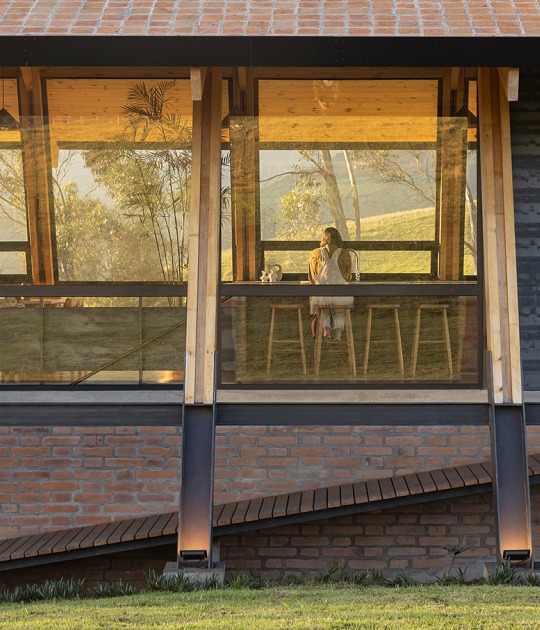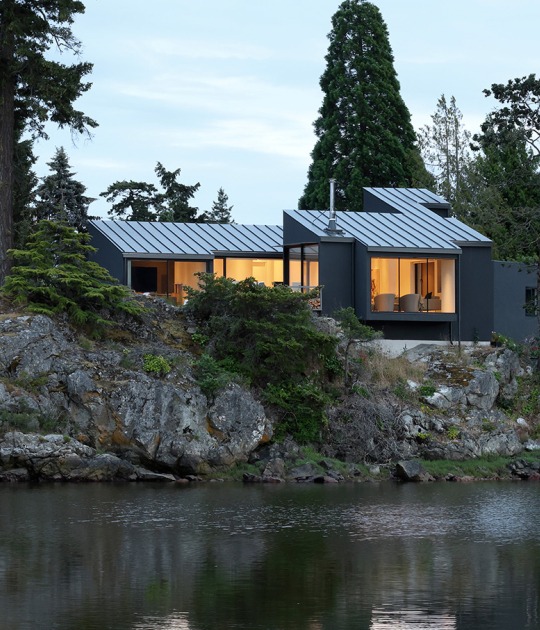Due to the southwest orientation of the façade, a hole was opened in the northeast corner of the roof that allows light to enter the entire house and highlights the texture of the materials. Both the openings and the furniture of the house were designed and built in the studio's own workshop, which allowed different tests to be carried out and adapted to the project.

Olive Tree House by Carlos A. Jurado. Photograph by Federico Cairoli.
Project description by Carlos A. Jurado
The house is located within the framework of a renovation in which there was a single floor on a 75 m² plot of land in which the house was developed, occupying 2/3 of the land in its footprint. The layout of the house was directly related to a 9 m high tree (ficus) on its southwest façade.
The project proposed the construction of a home for a family of three. The house is based on the creation of a new floor for a more private program, freeing up the ground floor, integrating the two floors with a staircase that was originally exterior, and that the project integrates in its entirety. At that time, the house showed a relationship with the external patio that was manifested in the textures of the materials, in particular the splashed plaster that was restored and remained as a trace of how the house related to the facades. Exteriors, this material gave rise to the new floor to generate a smooth texture, thus creating a dialogue with the existing footprint, which is manifested in the internal and external route of the house.
Its main façade, with a southwest location, led to the creation of a skylight - a skylight in the northeast corner that currently supplies light to the entire house and plays by highlighting the texture of the old finishing material. This skylight coincides with the main staircase of the house. which enhances the workspace of the house that overlooks that same staircase.

Olive Tree House by Carlos A. Jurado. Photograph by Federico Cairoli.
There was an express desire to give priority to the most social spaces of the home and emphasize the interior-exterior link, establishing direct relationships between these, which is why the first operation of the house is to free the ground floor in its entirety and leave a kitchen that integrates the living room and is also connected to the access patio. In addition to this, a new exterior staircase was proposed that would give continuity to the existing staircase and could create a vertical path that connected with the new terrace which is partially protected as a natural pergola with the crown of the tree (ficus) from the main entrance.
The wooden openings (solid parked cedar) along with the furniture of the house (cedar, paradise, and guatambú) were designed and built entirely in the studio's own workshop, this allowed different tests to be carried out and the furniture to be thought of directly related to the project. for an improvement in spatial quality, enriching the construction process of the work.
The main intention has been to create a feeling of shelter which, through its openings, including the skylight, allows sunlight to enter, generating shadows and textures with the pre-existence, thus forming the ingredients for the rituals of the collective encounter.




























































